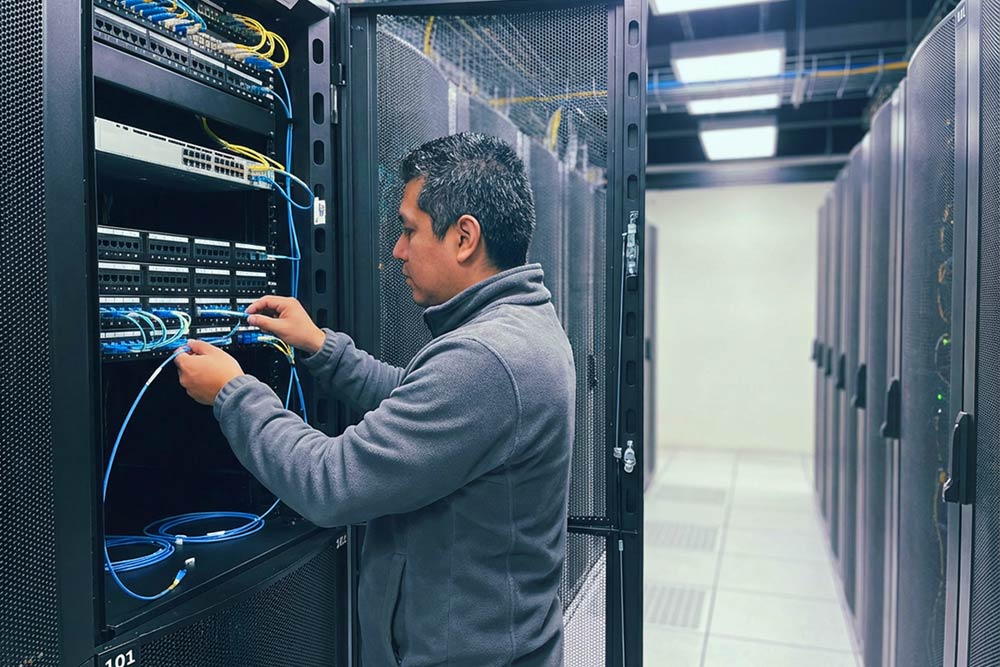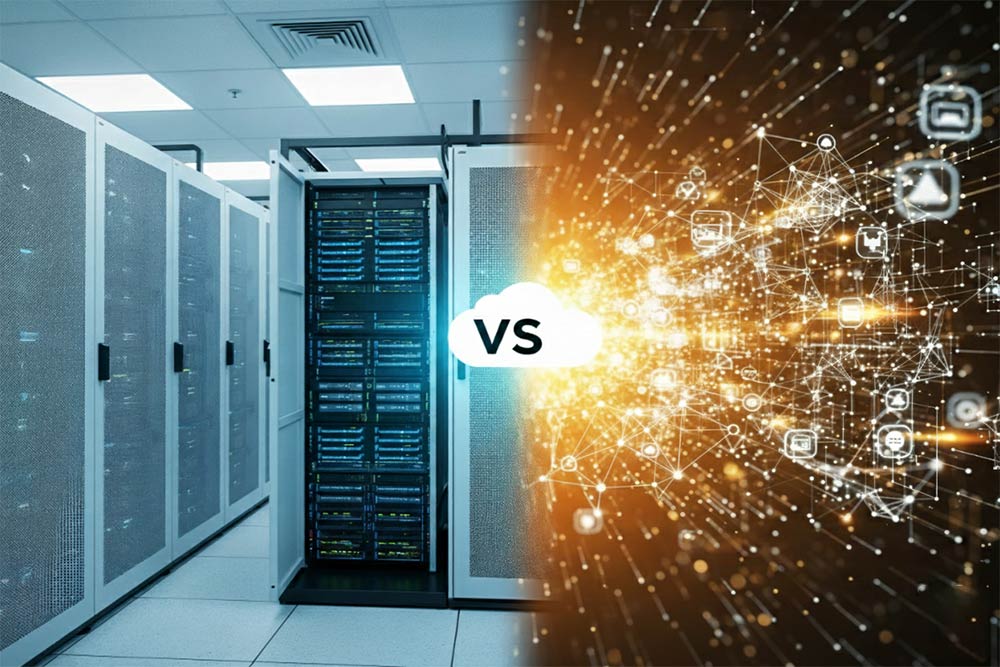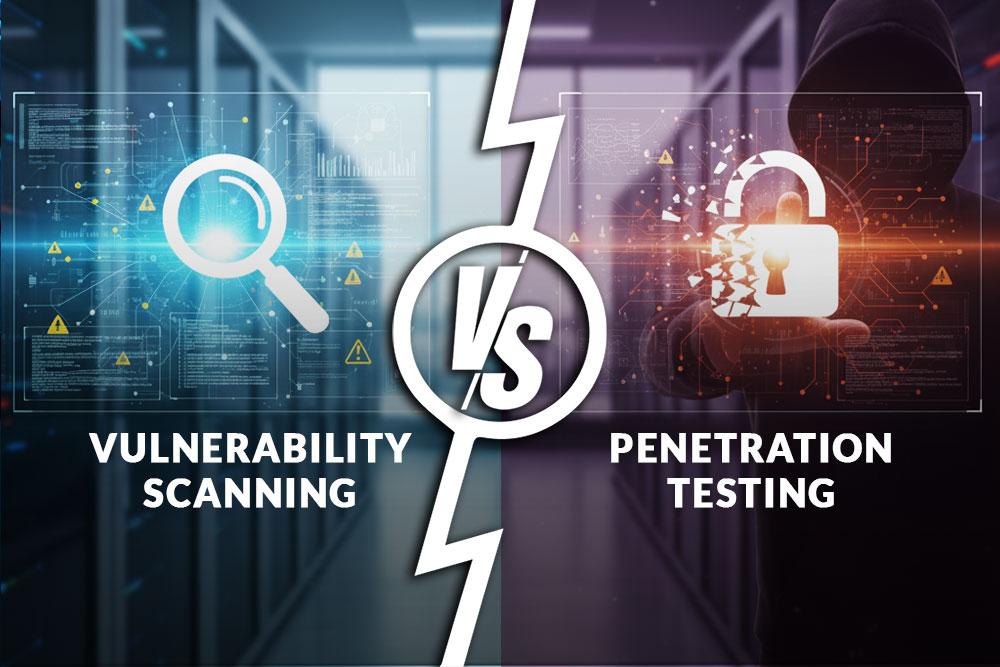It’s not breaking news anymore that the media and entertainment sector has become inseparable from its underlying digital infrastructure. High-resolution content creation, global streaming platforms, interactive gaming, and real-time news distribution all depend on the ability to move and process enormous volumes of data with the least possible delay.
Because of this, it’s becoming impossible to sustain most of today’s workloads on legacy broadcast infrastructure or siloed, on-premises systems. Contemporary workloads rely heavily on the distributed reach, interconnection density, and operational resilience of modern data centers. Among data centers, colocation has become particularly critical, offering media providers direct access to high-capacity networks, cloud on-ramps, and exchange points that support both scale and performance. For many media platforms today, colocation facilities are critical to ensuring that content can be produced, delivered, and monetized without costly interruptions. In this sense, data centers are no longer just the necessary background utilities but emerge as competitive players in the entire media value chain.
In this article, we’ll take a deep dive into colocation in media and entertainment. We’ll look into how colocation data centers are shaping the way audiences consume entertainment, and get a glimpse into what drives providers to compete in this rapidly evolving digital market.

The Use of Colocation in Media and Entertainment
The role of colocation in media and entertainment is defined first and foremost by the industry’s reliance on high-performance, interconnected infrastructures that sustain modern digital workflows.
In this sense, colocation providers offer something more than old-fashioned general-purpose IT hosting: denser power configurations, more resilience, and carrier-neutral ecosystems required to support the media industry’s data-heavy operations. Media organizations are under ongoing pressure to speed up production, distribute content globally, and provide constant and uninterrupted access to their audience to services.
Colocation can make things easier for providers by providing the necessary infrastructure in colocation sites with direct access to major networks, cloud platforms, and internet exchanges. This allows providers to eradicate performance bottlenecks and get access to the scalability and flexibility necessary to meet fluctuating demand. As streaming, gaming, and digital news consumption keep expanding, colocation in media and entertainment is starting to advance from being just a cost optimization strategy to becoming a tool for achieving a competitive posture in the market.
Colocation for Media Service Providers
Studios and service providers depend on the efficiency of complex production pipelines, where file sizes can routinely reach multiple terabytes. For visual effects rendering and collaborative editing, for instance, uninterrupted access to storage and compute resources is a must. Traditional on-premises environments simply lack the throughput and redundancy to support these requests efficiently.
Colocation helps providers integrate high-capacity storage arrays and GPU clusters into data centers designed for these high-demand, continuous operations. This ensures predictable performance and, at the same time, provides seamless connectivity to remote creative teams and public cloud render farms, as well as post-production platforms. As a plus, colocation environments typically offer the regulatory compliance and security standards necessary to safeguard pre-release content, which represents a valuable asset, and as such, a prime target for cyberattacks.
Facilitating Distribution for Content Delivery Network Providers
CDNs serve as the distribution layer for much of today’s entertainment ecosystem.
Their function depends on reducing latency by positioning content caches at network edge locations. Colocation facilities act as neutral interconnection points, where CDN operators can peer directly with carriers and internet exchanges, reducing the reliance on long-haul transit routes.
This type of architecture is critical when serving high-definition streaming to global audiences or handling live event broadcasts where milliseconds of latency can destroy user experience.
Because colocation in media and entertainment environments often coincides with dense peering ecosystems, CDN providers can scale capacity flexibly and interconnect with multiple networks, ensuring efficient and resilient content delivery.
Streaming Video Entertainment Consultants
The streaming sector illustrates very well how audience demand can present sudden spikes around premieres or live events. Infrastructure has to be able to absorb these sudden surges, and do it without compromising the quality of service.
Streaming consultants and platform operators are increasingly turning to colocation to integrate private infrastructure with cloud-based scaling resources, creating hybrid architectures that can optimize cost and performance. High-density racks are preferred for supporting transcoding engines, while colocation’s direct cloud on-ramps are an agile solution for shifting workloads seamlessly between private servers and hyperscale platforms. This type of architecture can significantly reduce latency and help maintain consistency in video quality by ensuring geographic proximity to end users.
In industries where keeping customers hinges on instantly available playback, colocation provides the stability and agility that’s needed to keep pace with global distribution models.
News Media
News media operate under tighter time constraints than almost any other sector. The value of content is highest as events unfold, and declines rapidly as actuality fades, making real-time delivery critical.
Colocation in media and entertainment can provide news organizations and communication service providers with the low-latency backbone so crucial to support global content distribution and satellite uplink integration. Beyond speed, security is a defining requirement, as well, because breaches or downtime can disrupt reporting and destroy reputation in the blink of an eye. Colocation environments mitigate these risks by providing redundant power systems, strict security protocols, and diverse carrier connections to ensure service continuity even during network disruptions. For news providers, the ability to deploy infrastructure within resilient colocation sites directly translates into faster reporting cycles and uninterrupted global coverage.
Online Gaming
Online gaming represents one of the most latency-sensitive workloads within the entire digital entertainment industry.
Multiplayer platforms deliver consistent performance to millions of users simultaneously, who are often located across distant continents.
Even minor delays can make the gameplay laggy, which quickly leads to user dissatisfaction and churn. Low latency is the lifeblood of the gaming industry, and achieving it often depends on whether the provider can offer the needed proximity to processing.
Because of this, colocation facilities play a very important role for gaming companies. They deploy edge servers in close proximity to major user populations, significantly reducing round-trip latency. Colocation data centers also provide the bandwidth density necessary to handle spikes during new releases or global tournaments. Combined with direct connectivity to cloud platforms and ISPs, colocation in media and entertainment contexts ensures that gaming platforms can scale dynamically, and, at the same time, maintain the low-latency performance so crucial for immersive user experiences.
Core Advantages of Colocation for Media and Entertainment
Legacy infrastructure models can no longer meet the demands of modern media. Content creation and delivery in this sector operate on scales where milliseconds of delay, or minor disruptions in availability, can translate into massive losses in audience engagement and, as a result, revenue.
Colocation provides the technical underpinnings that address these requirements: the network density, power, and operational resilience necessary to remain competitive. Consequently, the advantages of colocation in media and entertainment extend beyond baseline hosting efficiency and stretch into forming the foundation for reliable, high-quality user experiences.
Low Latency and Interconnection Density
For streaming platforms, news organizations, and gaming networks, latency can be a definer of business viability. Colocation facilities are strategically positioned in regions with dense interconnection ecosystems, which gives providers direct access to multiple carriers, internet exchanges, and cloud providers. This environment is crucial for media companies because they need access to low-latency pathways for content distribution, which can mean streaming a live sporting event to millions of viewers or connecting across continents for delivering multiplayer gaming sessions. By minimizing network hops and avoiding congested transit routes, colocation helps content move efficiently from production centers to end users, preserving quality and ensuring reliability.
High-Density Power and Cooling
When it comes to colocation in media and entertainment, it’s also important to consider that compute-heavy pipelines drive rack densities far beyond traditional IT baselines. Rendering farms, transcoding engines, and AI inference nodes push sustained thermal loads that legacy rooms just cannot handle. Modern colocation floors deliver 20–40 kW per rack as standard, with 60–100 kW footprints for GPU clusters. A load like this is sustained through cooling options like rear-door heat exchangers and direct-to-chip loops, plus hot/cold aisle containment and continuous thermal telemetry.
Power architectures use N+1 or 2N designs, diverse utility feeds, static transfer switches, and granular branch-circuit monitoring, which helps keep headroom during peak ingest or mastering windows. Thanks to high-performance colocation infrastructure and equipment, studios scale VFX nodes and high-throughput NVMe tiers without throttling, while 4K/8K finishing and real-time VR pipelines can retain deterministic performance and uptime.
Security and Compliance for Content Protection
Colocation in media and entertainment plays a critical role in safeguarding pre-release assets and live feeds from leaks or disruptions.
Facilities rely on multiple layers of protection: biometric access and mantraps to control entry, CCTV with extended retention for monitoring, segmented cages for isolation, and hardware security modules for sensitive keys. These measures are backed by compliance with ISO/IEC 27001, SOC 2 Type II, and Trusted Partner Network (TPN) standards, making sure that workflows meet industry requirements.
On the network side, east-west traffic segmentation, MACsec encryption, and immutable backup tiers are the guarantees that contain risks and minimize the impact of breaches. For broadcasters and OTT platforms, this translates into confidence that watermarking, DRM keys, and editorial content will remain shielded from public exposure. Geographic redundancy and well-tested failover runbooks further guarantee that production and distribution can go on without interruption, even during regional outages, so audiences never see a missed frame.
Hybrid and Multi-Cloud Integration
Media workloads rarely stay in one place; they move between on-premises infrastructure and hyperscale clouds, driving a critical need for seamless cloud adjacency. Colocation in media and entertainment solves this with dedicated on-ramps to AWS Direct Connect, Azure ExpressRoute, and Google Cloud Interconnect, as well as carrier-neutral fabrics that provide predictable, low-jitter L2/L3 paths.
Within these fabrics, VXLAN/EVPN overlays, QoS controls, and traffic steering stabilize performance for bandwidth-intensive tasks such as transcoding, AI inference, and just-in-time packaging. The result is that processing runs close to the audience edge, while the cloud remains in reserve for elastic surges.
High-throughput metro dark fiber and wavelength services move raw camera originals and mezzanine assets at wire speed into post-production. At the distribution layer, private CDN peering eliminates unnecessary hops, reducing latency for premieres and live events.
This model gives studios and broadcasters direct control over their datasets and GPU estates, while applying cloud resources only where latency and cost targets align.
The Strategic Importance of Colocation for Future Media Workflows
The media supply chain now depends less on abstract notions of “IT efficiency” and more on tangible infrastructure attributes. Compute density, interconnection depth, and traffic locality directly shape whether new services can reach audiences with broadcast-grade reliability. Colocation in media and entertainment has evolved from a facility decision into an architectural anchor, positioned where studio networks, hyperscale clouds, and CDNs converge. And this is not just any intersection: it’s where milliseconds define viewer engagement, subscriber churn, and long-term revenue.
Immersive Media and Real-Time Rendering
Extended reality (XR) stages, volumetric capture environments, and virtual production pipelines require infrastructure that can sustain multi-camera ingest, real-time ray tracing, and the transfer of terabyte-scale assets within strict single-digit millisecond latency budgets. To support these demands, colocation in media and entertainment increasingly incorporates GPU-optimized data halls positioned adjacent to high-capacity peering fabrics, ensuring deterministic render traffic performance.
Advanced transport mechanisms such as RDMA and NVMe-over-Fabrics minimize CPU overhead during asset movement, which keeps throughput consistent at scale. This architecture makes it possible for editors, colorists, and VFX teams to collaborate seamlessly across regions, preserving shot-to-shot timing and playback fidelity even under distributed production conditions.
AI-Driven Production and Personalization
Model training for speech-to-text, compliance checks, scene detection, and recommendation engines involves massive datasets and continuous GPU processing. Keeping training and inference close to the data reduces delays and costs, while cloud connections ensure extra capacity is available during major releases. In this environment, colocation in media and entertainment provides consistent throughput for data ingestion, quick checkpointing to storage, and secure delivery paths for AI models. This allows streaming platforms to move beyond static recommendations and deliver real-time, context-aware experiences, without exposing sensitive assets or bumping into unpredictable egress fees.
Edge Computing for Global Content Distribution
Competitive gaming, live sports, and interactive experiences demand extremely low latency. To meet these expectations, edge nodes close to internet exchanges and cable landing points can reduce the physical distance between content and users. Anycast routing and regional caching keep sessions steady even during heavy traffic. Meanwhile, synchronized clocks across regions and careful jitter control ensure fair gameplay and seamless, real-time streams across global audiences.
Sustainability and Energy Efficiency in Media Infrastructure
High-density media estates carry significant energy footprints. Contemporary colocation designs drive PUE toward 1.2–1.3 with liquid cooling, aisle containment, and AI-assisted thermal tuning. Renewable PPAs, heat reuse, and lithium-ion UPS stacks lower carbon intensity and improve step-load response. This allows studios and platforms to scale compute responsibly, meeting environmental targets without having to sacrifice throughput or service availability.

Global Media Exchange and Interconnection Hubs
Slowly but surely, colocation in media and entertainment is reshaping how content is exchanged across the digital supply chain.
Colocation facilities are evolving into global media exchange hubs. They are increasingly filling a gap as neutral platforms where everyone can interconnect without carrier lock-in. Carrier-neutral peering fabrics and dense cross-connect architectures support large-scale transfers that would be highly impractical across the public internet. Their purpose-built meet-me rooms are often optimized for media workloads and provide direct, low-latency pathways between industry peers. This cuts routing hops and minimizes jitter for time-sensitive streams.
Close proximity to major internet exchanges strengthens this fabric further. These conditions are particularly critical for workflows involving 8K video, immersive AR/VR, and volumetric capture, where asset sizes regularly span multiple terabytes. Colocation in media and entertainment delivers an interconnected infrastructure mesh that is designed for throughput, reliability, and minimal delay. This makes it possible for asset ingestion, rendering, and distribution to happen at the scale modern audiences demand.
Disaster Recovery and Business Continuity for Media Workflows
In media and entertainment, downtime directly translates into revenue loss, damage to the brand, and shaken audience trust. For live sports, global premieres, and large-scale interactive events, uninterrupted availability is a must, with zero tolerance for outages.
Colocation in media and entertainment addresses these demands with the perks of geographic redundancy and failover infrastructures spanning multiple facilities. This allows workloads to be replicated across regions, fortifying service continuity during local disruptions or natural disasters. Moreover, SLA-backed uptime, redundant power grids, and advanced fire suppression provide further operational guarantees that are not extras, but the norm for industry participants. If every dropped frame compromises viewer experience and monetization, colocation in media and entertainment functions as an invaluable layer of resilience. It provides the architecture required to sustain continuous delivery at scale, and acts as a safety net for content and brand integrity. This can really make a difference in our increasingly unforgiving distribution environment.
Looking Forward
As media and entertainment continue their shift toward ultra-high-resolution formats, immersive experiences, and real-time interactivity, the industry’s reliance on colocation will continue to deepen. The next frontier lies in aligning colocation ecosystems with cloud-native pipelines and edge deployments, ensuring that content is not just stored and distributed, but can be processed and monetized at ever-increasing speeds.
For providers operating in a sector where immediacy defines value, colocation transcends infrastructure and leaps into becoming the foundation of future-ready media architectures: architectures capable of supporting the scale, agility, and resilience demanded by tomorrow’s audiences.
Find Your Reliable Colocation Provider: Partner With Volico
At Volico Data Centers, we understand the needs of the media and entertainment industry. We continuously work to provide the cutting-edge technology and professional expertise required to deliver the highest quality service in an unforgivingly fast-paced world. Our carrier-neutral, 3rd Generation Data Center facilities with 2N+X Smart-Grid redundant power infrastructure and a 2N+X Smart-Grid redundant cooling infrastructure are built to provide the redundant power, cooling, and connectivity essential for maintaining uptime and uninterrupted performance.
Contact us to learn more about how we can help your company stay fast and agile in one of the most competitive industries.












